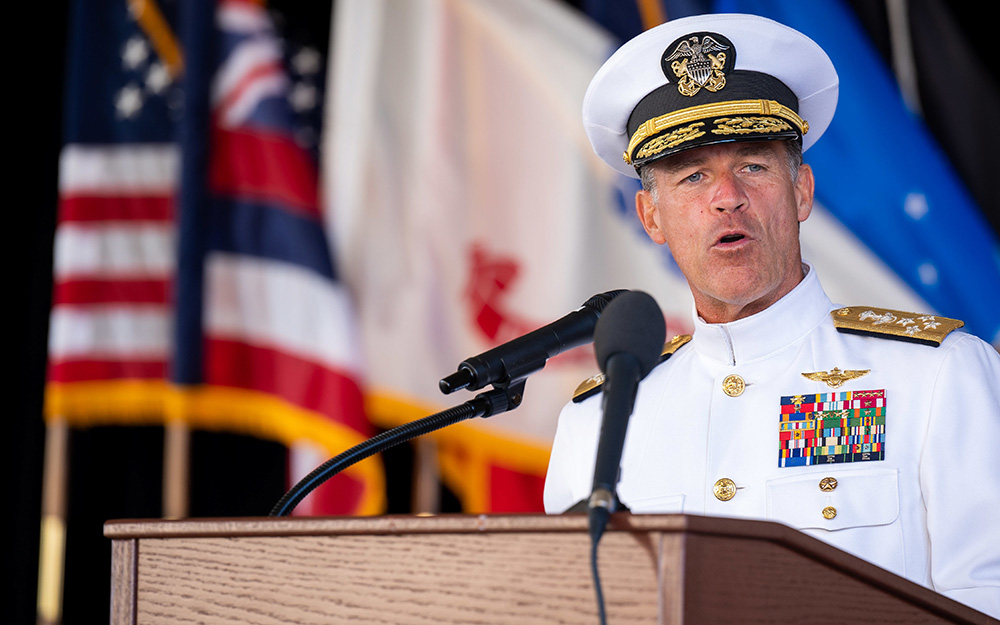The U.S. Space Force officially activated and assigned U.S. Space Forces, Indo-Pacific to the U.S. Indo-Pacific Command in a ceremony Nov. 22 at Camp H.M. Smith under the leadership of Brig. Gen. Anthony Mastalir.
USSPACEFOR-INDOPAC is the service’s second component to present forces to a combatant command and the first to stand up at an overseas combatant command. The component is directly subordinate to the Chief of Space Operations for the execution of responsibilities under Title 10 for service-specific administration and support functions.
“This is truly an historic moment for the Space Force,” said Chief of Space Operations Gen. B. Chance Saltzman. “This is an important step as we normalize Space into the joint force. Given today’s multi-domain character of war, Space must be deeply integrated with the joint team.”
Having field components dedicated to Space removes layers of bureaucracy and aligns with how other services provide forces to the commander. Additionally, activating the USSF component to INDOPACOM provides clarity to command relationships, roles and responsibilities.
“Our approach requires the joint force to think, act, and operate differently by synchronizing our operations, re-aligning our posture, and advancing our warfighting capabilities,” said Adm. John Aquilino, commander, U.S. Indo-Pacific Command. “Today’s ceremony represents a tangible progression in accomplishing our mission of deterrence, while simultaneously increasing our ability to defend the homeland, protect the joint force, operate in contested space, and provide all-domain battlespace awareness.”
USSF service components integrate at the component level and provide combatant commanders a subordinate space commander, organic space planning and employment expertise, and space command and control that is focused on the joint force’s operational warfighting priorities and requirements.
USSPACEFOR-INDOPAC will provide USINDOPAC a cadre of space experts who can work with allies and partners to integrate space activities into shared operations, activities, and investments. By doing this, USSPACEFOR-INDOPAC enhances security stretching from the Indian Ocean across South and East Asia to the West coast of the United States. Furthermore, USSPACEFOR-INDOPAC promotes regional stability and advances U.S. partnerships in the region.
“Today we double down on our commitment to integrate space across all components, all domains,” said Brig. Gen. Anthony Mastalir, commander of U.S. Space Forces Pacific. “Our task is simple: ensure that warfighters in INDOPACOM maximize the combat effects available from space capabilities — capabilities across all services, U.S. Space Command, the intelligence community, and commercial space.”
USSPACEFOR-INDOPAC will be headquartered at Joint Base Pearl Harbor – Hickam in Hawaii to maximize synergy with USINDOPACOM headquarters and the existing Air Operations Center with U.S. Pacific Air Forces.
The stand up at USINDOPACOM is the USSF’s blueprint for presenting forces to the other combatant commands. The nation’s newest service plans to establish two additional component field commands and present them to U.S. Central Command and U.S. Forces Korea by the end of the calendar year. Planning is also underway to establish USSF service components at each of the remaining combatant commands.






